感兴趣的朋友可以去我的语雀平台进行查看更多的知识。
https://www.yuque.com/ambition-bcpii/muziteng
3. Vue组件化编程
3.1 模块与组件、模块化与组件化
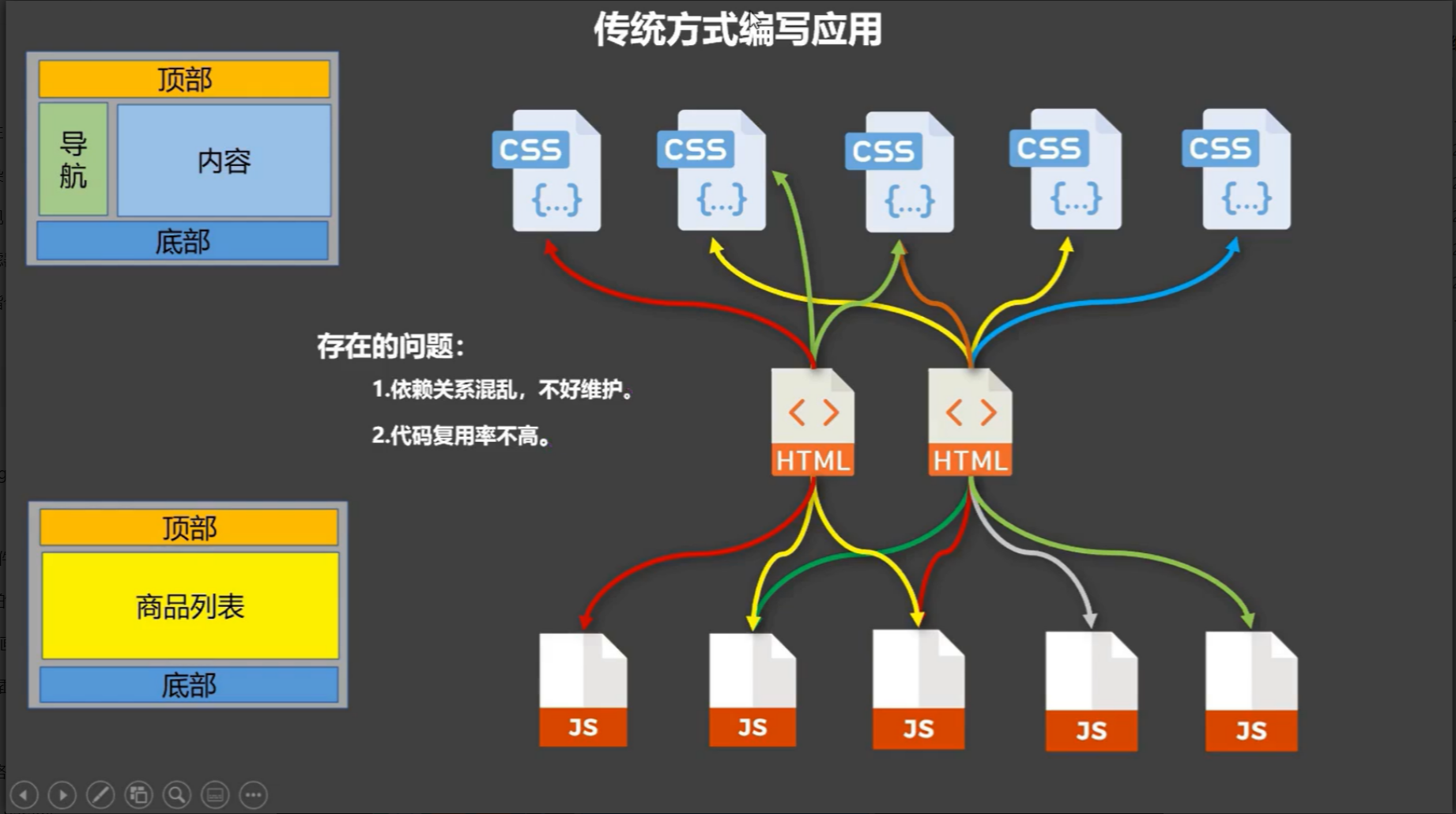
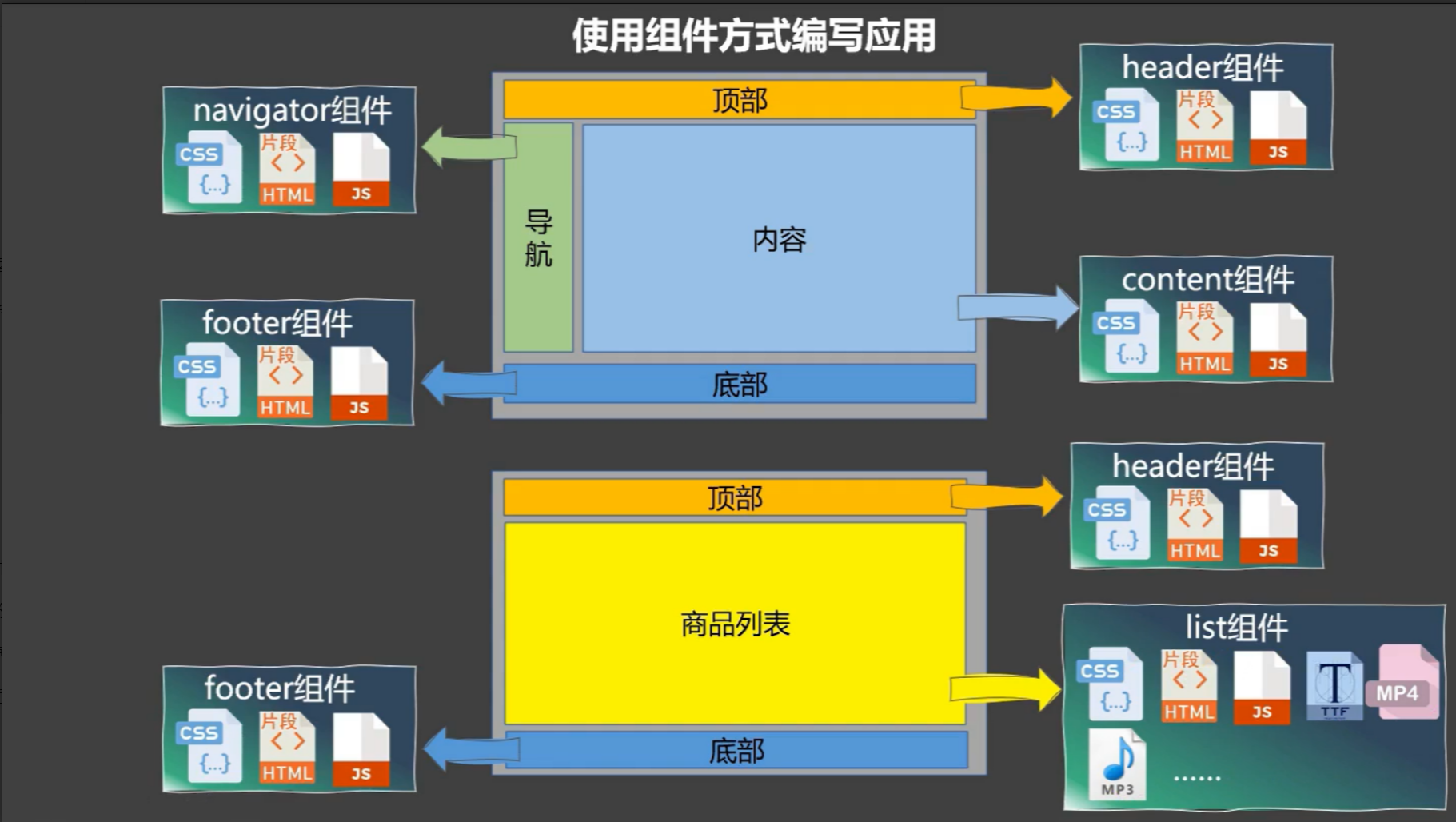
模块
- 理解:向外提供特定功能的js程序,一般就是一个js文件
- 为什么:js文件很多很复杂
- 作用:复用、简化js的编写,提高js运行效率
组件
- 定义:用来实现局部功能的代码和资源的集合(html/css/js/image…)
- 为什么:一个界面的功能很复杂
- 作用:复用编码,简化项目编码,提高运行效率
模块化
- 当应用中的js都以模块来编写的,那这个应用就是一个模块化的应用
组件化
- 当应用中的功能都是多组件的方式来编写的,那这个应用就是一个组件化的应用
3.2 非单文件使用
非单文件组件:一个文件中包含有n个组件
单文件组件:一个文件中只包含有1个组件
3.2.1 基本使用
Vue中使用组件的三大步骤
-
定义组件
使用
Vue.extend(options)创建,其中options和new Vue(options)时传入的options几乎一样,但也有点区别el不要写,因为最终所有的组件都要经过一个vm的管理,由vm中的el才决定服务哪个容器data必须写成函数,避免组件被复用时,数据存在引用关系
-
注册组件
- 局部注册:
new Vue()的时候options传入components选项 - 全局注册:
Vue.component('组件名',组件)
- 局部注册:
-
使用组件
编写组件标签如
<school></school>
<div id="app">
<h2>{{msg}}</h2><br/>
<!--第三步:编写组件标签-->
<school></school>
<student></student>
<hello></hello>
</div>
<div id="app2">
<!--由于是全局注册的组件,所以可以使用-->
<hello></hello>
</div>
<script>
Vue.config.productionTip = false;
// 第一步:创建school组件
const school = Vue.extend({
// el: "#app", 定义组件的时候,一定不要写el配置项
// 因为最终所有的组件都要被一个vm管理,由vm决定服务哪个容器
template: '<div class="demo"><h3>学校名称:{{schoolName}}</h3><h3>学校地址:{{address}}<br/><button @click="showName">点我提示学校名</button></h3></div>',
data() {
return {
schoolName: "CQJTU",
address: "重庆南岸"
}
},
methods: {
showName() {
alert(this.schoolName);
}
},
});
// 创建student组件
const student = Vue.extend({
template: '<div><h3>学生姓名:{{studentName}}</h3><h3>学生年龄:{{age}}</h3></div>',
data() {
return {
studentName: '张三',
age: 18,
}
}
});
// 创建hello组件
const hello = Vue.extend({
template: '<div><h3>你好啊!{{name}}</h3></div>',
data() {
return {
name: "Teng",
}
}
});
// 第二部:全局注册组件
Vue.component('hello', hello);
// 创建vm
new Vue({
el: "#app",
data: {
msg: "你好!",
},
// 第二步:注册组件(局部注册)
components: {
school,
student,
}
});
new Vue({
el: "#app2",
})
</script>
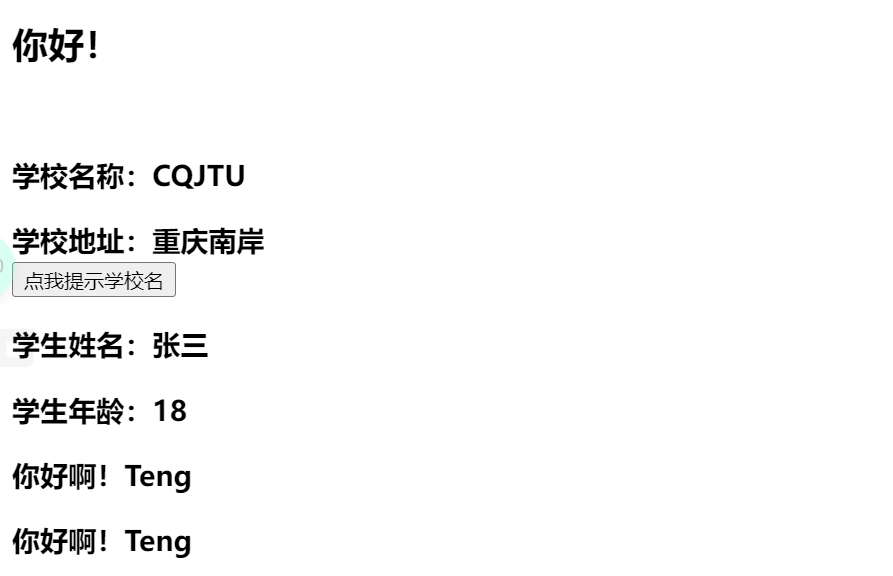
3.2.2 组件注意事项
关于组件名
- 一个单词组成
- 第一种写法(首字母小写):school
- 第二种写法(首字母大写):School
- 多个单词组成
- 第一种写法(kebab-case 命名):my-school
- 第二种写法(CamelCase 命名):MySchool(需要Vue脚手架支持)
- 备注
- 组件名尽可能回避HTML中已有的元素名称,例如:h2、H2都不行
- 可以使用
name配置项指定组件在开发者工具中呈现的名字
关于组件标签
- 第一种写法:
<school></school> - 第二种写法:
<school/>(需要Vue脚手架支持) - 备注:不使用脚手架时,
<school/>会导致后续组件不能渲染
一个简写方式:const school = Vue.extend(options)可简写为const school = options,因为父组件components引入的时候会
自动创建
<div id="app">
<h2>{{msg}}</h2>
<school></school>
</div>
<script>
// 定义组件
const school = Vue.extend({
name: 'school', // 组件给自己起个名字,用于在浏览器开发工具上显示
template: `
<div>
<h3>学校名称:{{name}}</h3>
<h3>学校地址:{{address}}</h3>
</div>
`,
data() {
return {
name: "CQJTU",
address: "重庆",
}
}
})
new Vue({
el: "#app",
data: {
msg: "欢迎学习Vue!",
},
components: {
school,
}
})
</script>
3.2.3 组件的嵌套
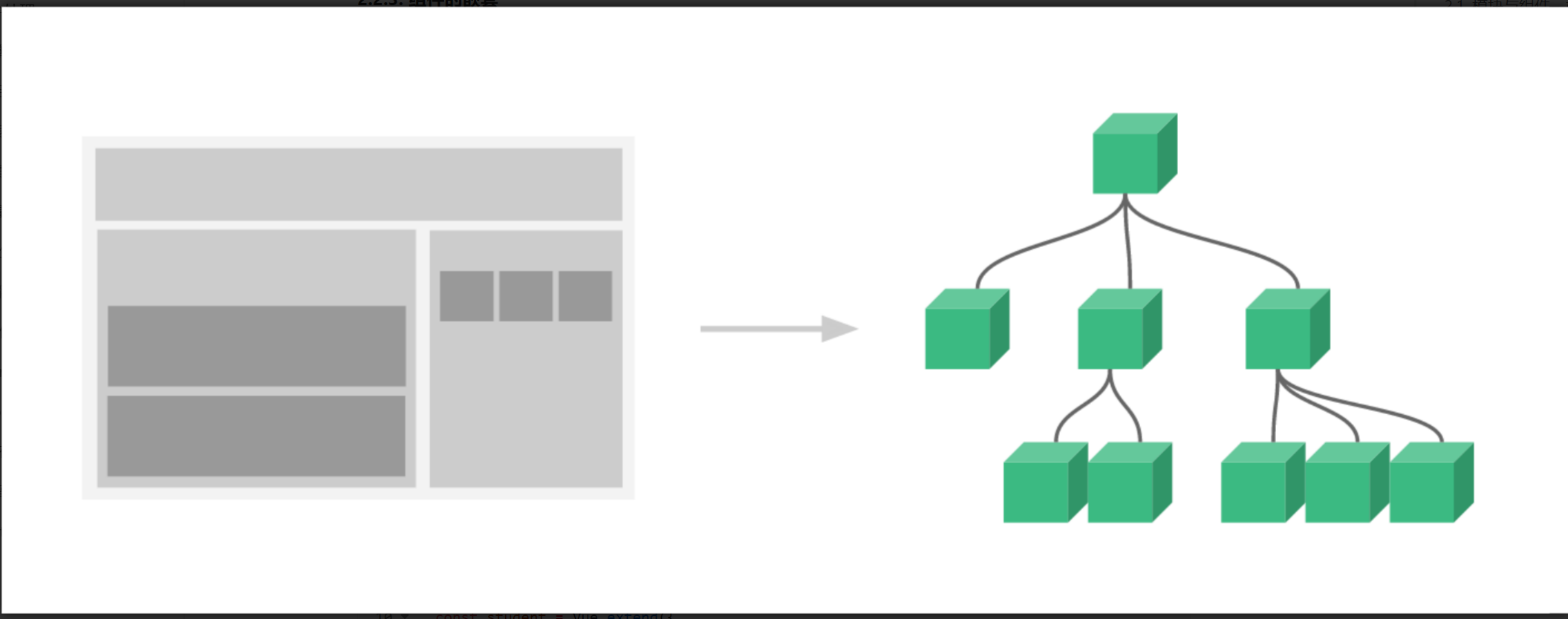
<div id="root"></div>
<script>
const student = Vue.extend({
name: "student",
template: `
<div>
<h4>学生姓名:{{ name }}</h4>
<h4>学生年龄:{{ age }}</h4>
</div>
`,
data() {
return {
name: "Teng",
age: 20,
}
}
});
const school = Vue.extend({
name: 'school',
template: `
<div>
<h3>学校名称:{{ name }}</h3>
<h3>学校地址:{{ address }}</h3>
<student></student>
</div>
`,
data() {
return {
name: "CQJTU",
address: "重庆",
}
},
// 注册组件(局部)
components: {
student,
}
});
// 定义hello组件
const hello = Vue.extend({
template: `<h3>{{ msg }}</h3>`,
data() {
return {
msg: '欢迎进行学习!!!',
}
}
});
// 定义app组件
const app = Vue.extend({
template: `
<div>
<hello></hello>
<school></school>
</div>
`,
components: {
hello,
school,
}
})
// 创建vm
new Vue({
el: "#root",
template: `
<app></app>`,
// 注册组件(局部注册)
components: {
app,
}
})
</script>
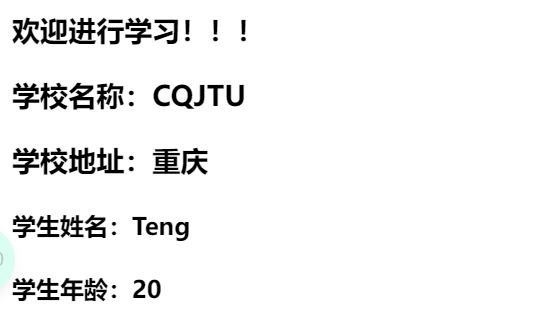
3.2.4 VueComponent
关于VueComponent
-
school组件本质是一个名为**
VueComponent的构造函数**,且不是程序员定义的,而是Vue.extend()生成的 -
我们只需要写
<school/>或<school></school>,Vue解析时会帮我们创建school组件的实例对象,即Vue帮我们执行的newVueComponent(options) -
每次调用
Vue.extend,返回的都是一个全新的VueComponent,即不同组件是不同的对象 -
关于
this指向-
组件配置中
data函数、methods中的函数、watch中的函数、computed中的函数,它们的this均是**VueComponent实例对象** -
new Vue(options)配置中:data函数、methods中的函数、watch中的函数、computed中的函数,它们的this均是**Vue实**例对象
-
-
VueComponent的实例对象,以后简称vc(组件实例对象)Vue的实例对象,以后简称vm
<div id="root">
<school></school>
<hello></hello>
</div>
<script>
const school = Vue.extend({
name: "school",
template: `
<div>
<h2>学校名称:{{ name }}</h2>
<h2>学校地址:{{ address }}</h2>
<button @click="showName">点我提示学校名</button>
</div>
`,
data() {
return {
name: "CQJTU",
address: "重庆市南岸",
}
},
methods: {
showName() {
// 组件中的this指的是VueComponent
console.log('showName', this);
}
}
});
const test = Vue.extend({
template: '<span>cqjtu</span>'
})
const hello = Vue.extend({
template: `
<div>
<h2>{{ msg }}</h2>
<test></test>
</div>
`,
data() {
return {
msg: "你好!",
}
},
components: {
test,
}
});
console.log('@', school);
console.log('#', hello);
const vm = new Vue({
el: "#root",
components: {
school,
hello
}
})
</script>
3.2.5 一个重要的内置关系
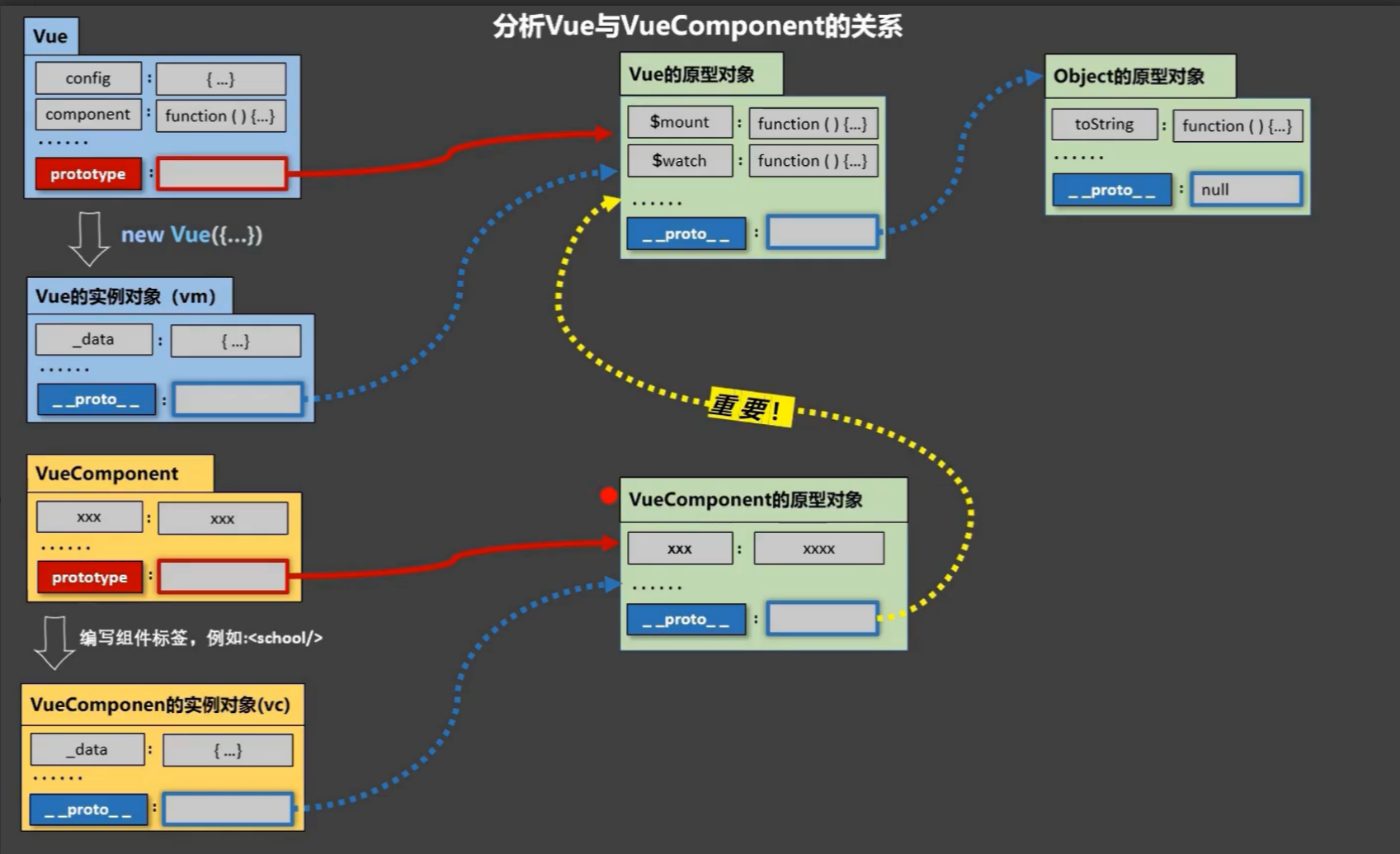
一个重要的内置关系:VueComponent.prototype.__proto__ === Vue.prototype
为什么要有这个关系:让组件实例对象vc可以访问到Vue原型上的属性、方法
<div id="root">
<school></school>
</div>
<script>
Vue.prototype.x = 99;
const school = Vue.extend({
name: 'school',
template: `
<div>
<h3>学校名称:{{ name }}</h3>
<h3>学校地址:{{ address }}</h3>
<button @click="showX">点我输出x</button>
</div>
`,
data() {
return {
name: "CQJTU",
address: "重庆",
}
},
methods: {
showX() {
// 能输出x
console.log(this.x);
}
}
});
const vm = new Vue({
el: "#root",
data: {
msg: "你好!"
},
components: {
school
}
});
console.log(vm);
console.log(school.prototype.__proto__ === Vue.prototype); // true
</script>
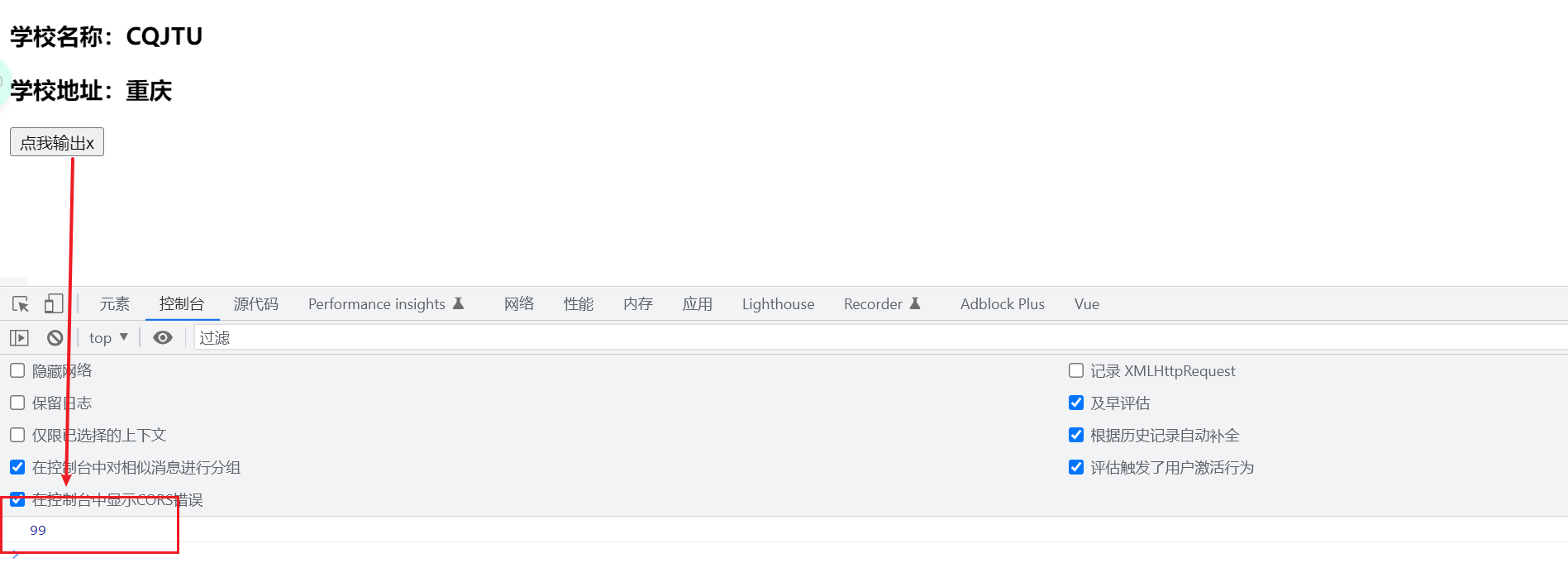
3.3 单文件组件
School.vue
<template>
<div id="demo">
<h2>学校名称:{{ name }}</h2>
<h2>学校地址:{{ address }}</h2>
<button @click="showName">点我提示学校名字</button>
</div>
</template>
<script>
export default {
name: "School",
data() {
return {
name: "CQJTU",
address: "重庆市南岸区",
}
},
methods: {
showName() {
alert(this.name);
}
}
}
</script>
<style scoped>
#demo {
background: skyblue;
}
</style>
Student.vue
<template>
<div>
<h2>学生姓名:{{ name }}</h2>
<h2>学生年龄:{{ age }}</h2>
</div>
</template>
<script>
export default {
name: "Student",
data() {
return {
name: "Teng",
age: 20,
}
}
}
</script>
<style scoped>
</style>
App.vue
<template>
<div>
<School></School>
<Student></Student>
</div>
</template>
<script>
// 引入组件
import School from "./School";
import Student from "./Student";
export default {
name: "App",
components: {
School,
Student
}
}
</script>
<style scoped>
</style>
main.js
import App from "./App";
new Vue({
el: "#root",
// template: "<App></App>",
components: {
App,
}
})
index.html
<!DOCTYPE html>
<html lang="en">
<head>
<meta charset="UTF-8">
<title>单文件组件</title>
</head>
<body>
<!--准备一个容器-->
<div id="root">
<App></App>
</div>
<script src="../js/vue.js"></script>
<script src="main.js"></script>
</body>
</html>
上述最终的代码无法运行是由于浏览器不支持ES6的语法,但上述是Vue脚手架的大致模块。放在脚手架中即可运行。






















 702
702











 被折叠的 条评论
为什么被折叠?
被折叠的 条评论
为什么被折叠?










